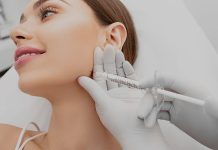Many may think that long-lasting cosmetic treatments are meant solely for aging skin and dealing with fine lines and wrinkles. However, a recent study by SkinSpirit Medical Spa found that nonsurgical cosmetic treatments are more popular amongst younger generations than we may have thought.
To better understand exactly who is getting cosmetic treatments nowadays, SkinSpirit conducted a study of 300 women across the U.S. ranging in age from 18 to 60 and asked them a series of questions regarding whether they have had nonsurgical aesthetic treatments and if their attitude surrounding these noninvasive procedures has changed as a result. Despite the common association between injectable neurotoxins and cosmetic treatments with older patients, the study found that younger generations do in fact appreciate a nonsurgical procedure more than is commonly perceived.
Findings showed that 71 percent of the surveyed women have or would consider getting nonsurgical aesthetic treatments, and 56 percent of participants also said that they rely on a few long-lasting beauty treatments, such as Botox Cosmetic or laser hair removal. But, what is really significant in these findings, is that a whopping 90 percent of the surveyed women were aged 25-44, meaning that the majority of women who said yes to having or considering cosmetic treatments as well as relying on them belong to either Millennial, Xennial or Gen Z demographics.
So, why is this shift in attitude towards and perception of nonsurgical aesthetic treatments taking place now? SkinSpirit explains that “What we’re seeing is a cultural shift that prioritizes convenience. Let’s call it ‘The Beyoncé Effect.’ Nearly a third of women love that they can honestly say, ‘I woke up like this,’ and more than 70 percent said that long-lasting treatments like Botox and laser hair removal are important because they shave time off every day routines.”
The rising popularity of nonsurgical aesthetic treatments amongst younger generations was not the only surprising finding in SkinSpirit’s research. The study also disproved the idea that cosmetic treatments are reserved solely for the 1 percent. Of the 300 participants—the majority of whom undergo and rely on long-lasting cosmetic treatments as a regular part of their beauty routine— 27 percent listed their annual household income between $25,000 and $50,000.
What SkinSpirit’s research has shown is that a renaissance is occurring around the perception of cosmetic treatments; what was once a lifestyle luxury for the old and rich is now a common addition to the modern women’s beauty routine. As social media continues to promote time-saving cosmetic treatments and the overarching attitude towards nonsurgical aesthetic procedures softens, it looks like we can expect more fresh faces to pop up in doctors’ waiting rooms.






